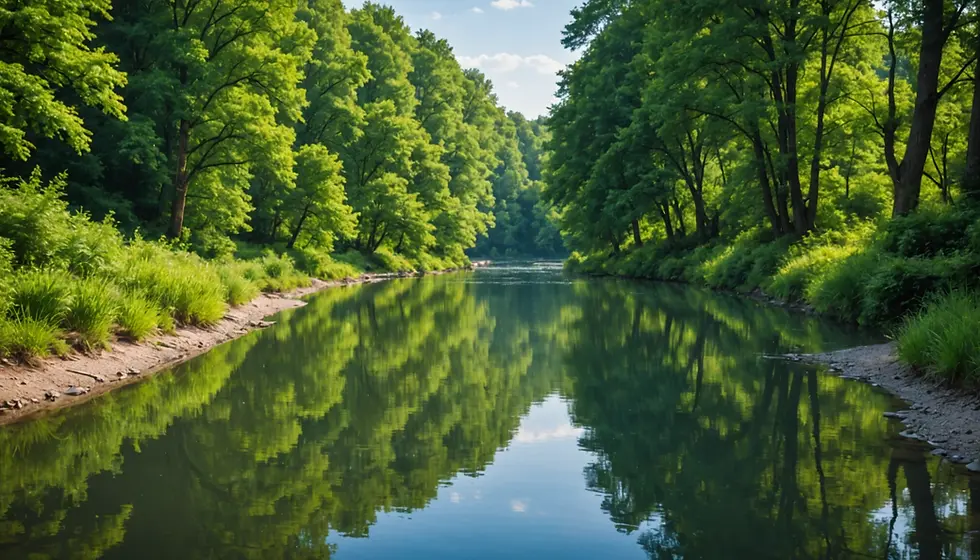The Ultimate Guide to Essential Fly Fishing Gear for Beginners: From Rods and Reels to Must-Have Fly Patterns
- Flying Fishman

- Feb 9
- 4 min read
Fly fishing is not just a sport; it’s a tranquil activity that connects you with nature. Whether you dream of casting a line in a peaceful river or sharing fishing tales with friends, starting can feel like a daunting task with so many gear options available. This guide simplifies the journey. We'll explore essential fly rods and reel combos, tips for selecting the right fly lines and leaders, and must-have fly patterns for beginners to increase your chances of a successful catch.
Essential Fly Rod and Reel Combos
Selecting the right fly rod and reel combo is crucial for beginners. It can significantly enhance your overall fishing experience.
Choosing the Right Rod: A medium-action rod is ideal for new anglers. A standard rod length of 9 feet balances casting distance and line control, making it easier to learn casting techniques. For freshwater fishing, a 5 or 6 weight rod is versatile enough to target popular species like trout, bass, and panfish.
Selecting the Reel: It's best to pair your rod with a reel designed for its weight. Look for a reel with a smooth drag system, enabling you to control fish effectively during a fight. Many brands offer combined rod and reel packages that ensure a good match, simplifying the choice for beginners.
For example, the Orvis Encounter Fly Rod and Reel Outfit is a popular choice among newcomers. This combo typically retails for around $199 and provides quality performance that allows beginners to get a feel for fly fishing without breaking the bank.
Benefits of a Combo Package: Combo packages save money while providing a well-balanced setup. They allow beginners to build confidence as they practice casting and reeling in fish, setting a solid foundation for future fishing trips.

Choosing the Right Fly Lines and Leaders for Fishing
After you've selected your rod and reel, the next logical step is to choose the right fly lines and leaders. These components can significantly impact your casting abilities and ultimately your success on the water.
Fly Lines: For beginners, a weight-forward floating line is the best option. This line helps simplify casting, making it easier to present your fly on the water surface. Ensure that the line matches your rod's weight, typically in the 5 or 6 weight category. According to a survey from the American Fly Fishing Trade Association, approximately 67% of newbies find floating lines easier for their initial fishing experiences.
Leaders: Leaders connect the fly line to the fly and are crucial for effective presentation. A tapered leader measuring about 9 feet is a good starting point. This length enhances presentation while decreasing the chances of spooking fish.
Tippet Material: Don’t overlook tippet material, the final segment of line attached to your leader. A typical choice for beginners is a tippet in the 4x-6x range. This size strikes a balance between strength and invisibility in the water, giving you the confidence to go after elusive fish.
Navigating the world of fly lines and leaders may seem complex, but with a bit of exploration, you'll discover the combinations that suit your fishing style. Starting with a quality floating line and a tapered leader will form a strong foundation for your fly fishing adventures.
Must-Have Fly Patterns for Beginners
Now that your gear is set, let's discuss the essential fly patterns that will improve your catch rate. Having a variety of effective flies is key to adapting to different fishing conditions.
Dry Flies: These flies mimic insects on the water's surface. The Adams and Humpy are two excellent beginner patterns. Both are easy to tie, and data shows they work effectively for multiple species, like trout. Research indicates that dry flies can increase catch rates by up to 30% in certain conditions.
Nymphs: Representing the insect life below the surface, nymphs are vital for catching fish. The Prince Nymph and the Pheasant Tail Nymph are simple and effective patterns for beginners. They are renowned for luring fish even when they're not actively feeding on the surface.
Streamers: If you're looking to target larger fish, consider using streamers. The Woolly Bugger is a versatile pattern, capable of imitating various baitfish and other creatures. Its effectiveness is well-regarded, often resulting in larger catch sizes.
Poppers: Perfect for surface fishing, poppers create enticing commotion on the water. They're particularly effective for bass during warm weather, especially in lakes or ponds.
Using these must-have fly patterns will allow beginners to experiment with different techniques and enhance their chances of a successful outing. Practicing with various flies will also help refine your skills and improve your presentation.
Your Path to Fly Fishing Mastery
Taking the plunge into fly fishing doesn't have to feel daunting. By concentrating on essential gear like well-matched rod and reel combos, selecting the right fly lines and leaders, and building a collection of effective fly patterns, you set yourself up for a rewarding experience in this beautiful sport.
Building your fly fishing knowledge and skills will take time, and every expert started just like you. With the right tools and a genuine enthusiasm for learning, you will soon enjoy the soothing rhythms of nature while mastering the art of fly fishing. So, grab your gear and prepare to embark on your fly fishing adventure. Happy fishing!



